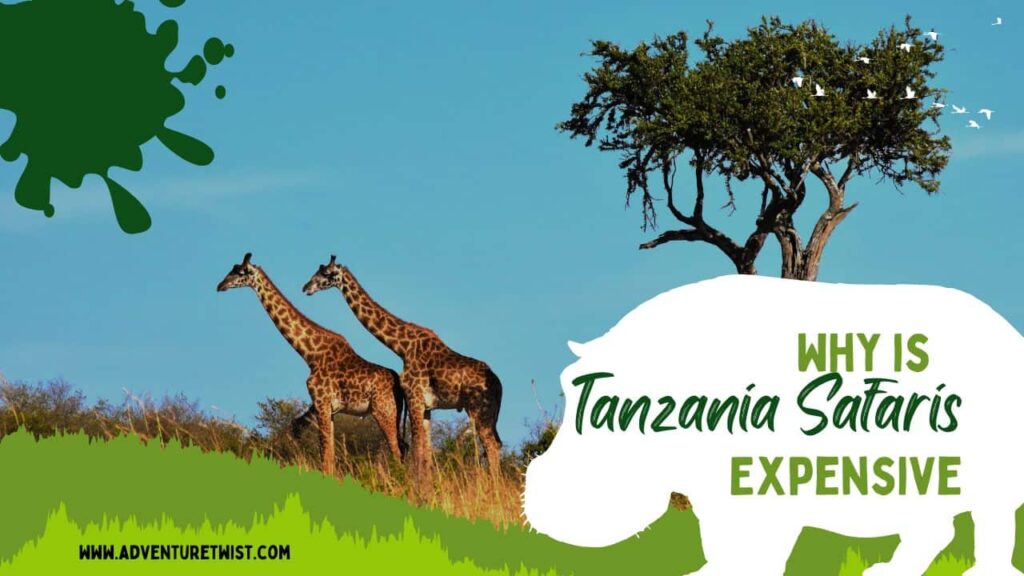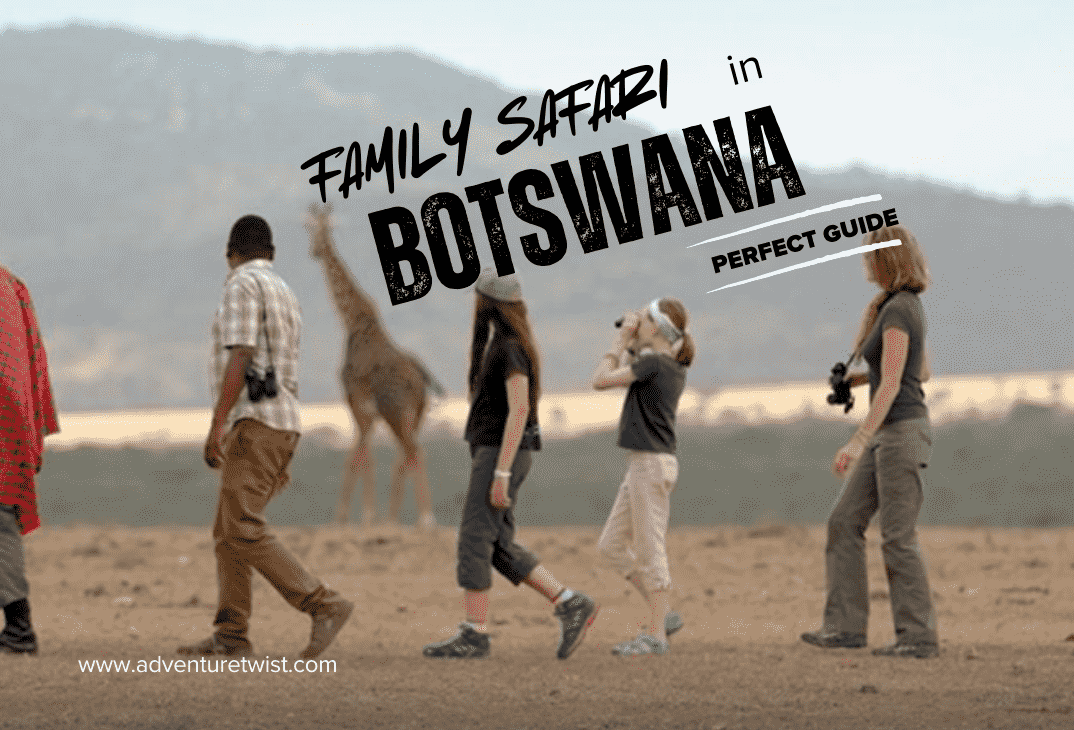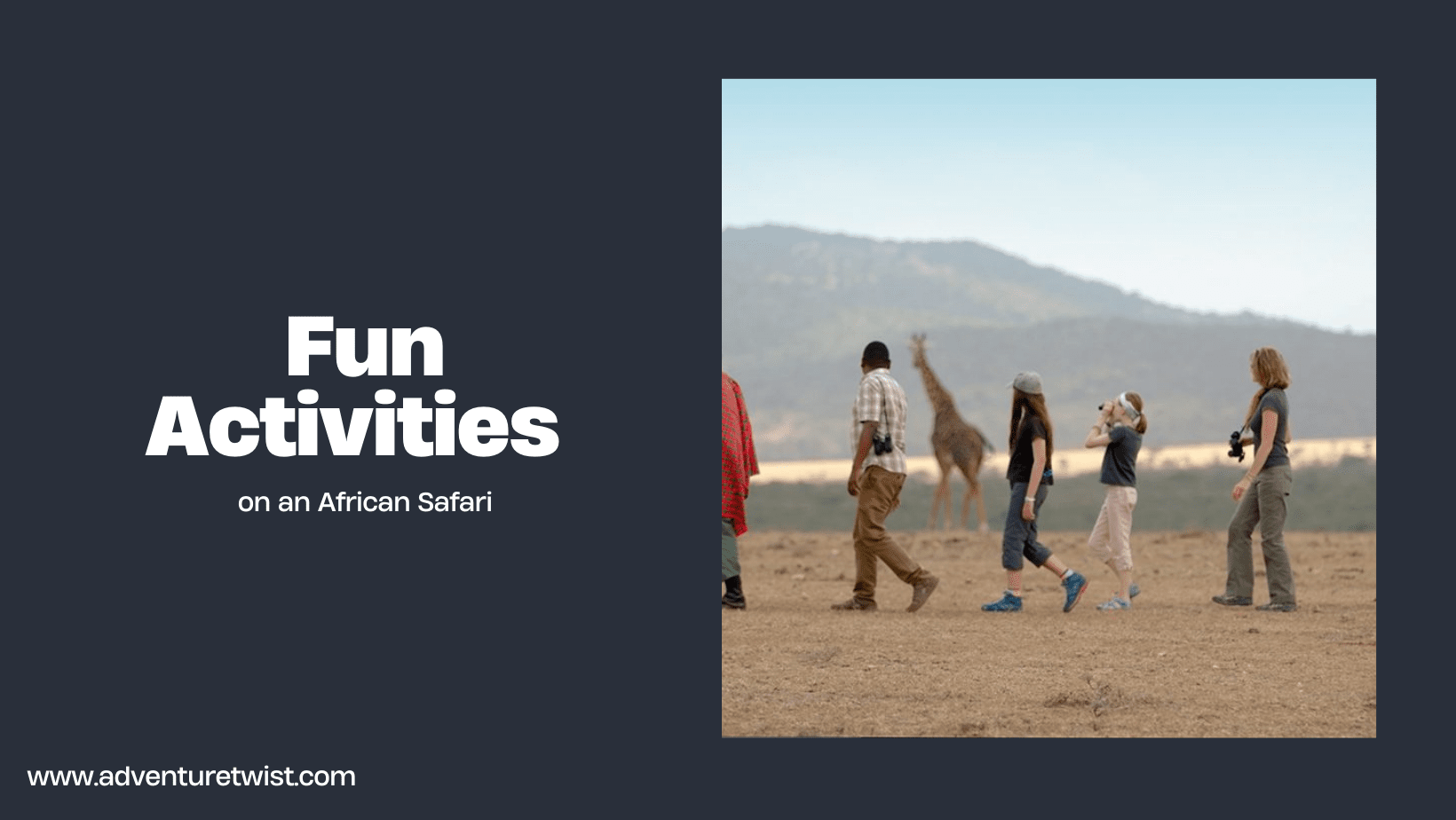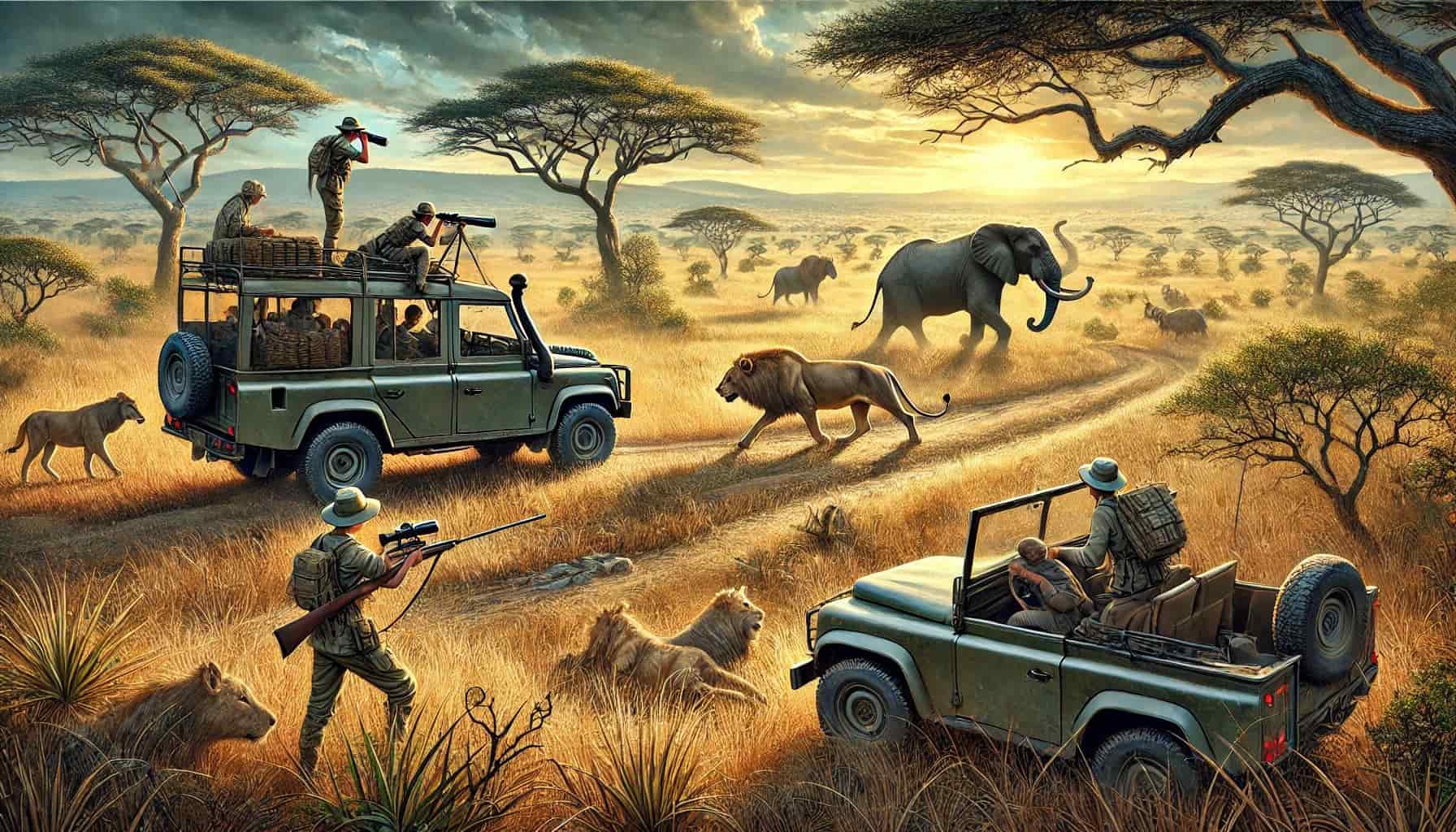
People who visit Safaris in Tanzania have been found to be significantly more expensive than other African safari experiences. However, its premium fees aren’t solely because of the Great Migration in the Serengeti, the Ngorongoro Crater, and the towering Mount Kilimanjaro.
Mindful of its breathtaking landscapes and diverse wildlife that leave unforgettable epic memories in the minds of safari enthusiasts, Tanzania pursues a clear strategy that promotes high-value, low-impact tourism rather than mass tourism.
Many parks and lodges restrict the number of guests allowed at any given time in order for environmental degradation to be minimized.
The country deliberately seeks to attract fewer tourists willing to spend more money, rather than increasing the overall number of visitors. This deliberate low-density tourism puts Tanzania’s travel budget on the high side. Due to the eco-friendly approach, few travellers that are allowed in would have to pay premium fees.
Factors That Make Tanzania Safaris Expensive
Apart from the exclusivity policy as a main driver of safari costs in Tanzania, other factors responsible are as follows:
- Logistical challenges associated with the remoteness of the parks
- Popularity
- Professionalism or high-quality service standards
- Conservation efforts
- Luxury
We shall now go ahead to discuss these factors in order for the potential visitors to better appreciate the investment involved in a Tanzanian safari.
Why is Tanzania Safaris Expensive?
Most of Tanzania’s parks and camps are often located in remote and difficult-to-reach areas. Operating these destinations poses a significant logistical nightmare.
In some cases, supplies are flown into remote areas where roads are impractical. Getting a grader to the Serengeti to fix the road requires a lot of planning and resources.
The safari lodges or camps are a long way from any of the towns. You cannot just run out to the store as the closest could be over 200 kilometres away.
Every item, including food and water, toiletries, mattresses, fuel and building materials, must be transported over long distances. While it takes about two hours to fly to a camp, it can take up to two days to drive there. It costs even more to fly goods to the lodges.
- Staff to Guest Ratio: With the controlled number of visitors to Tanzania safaris, it is common to find a ratio of staff to guests can be 5 to 1. There can be a porter, a concierge, a maid and properly a barman or waitress all serving one guest. The safari visitor would have to bear the cost of the services provided by these workers.
RECOMMENDED: Safari Clothing Tips: What Not to Wear on an African Safari
How Popularity Drives Up Tanzania Safari Costs

Tanzania safari prices are partly determined by how popular they are. Safari operators with excellent reputations usually charge a premium for their services, cashing in on the prestige and credibility they avail visitors.
The same applies to Tanzania’s natural wonders. World-famous sights and sites like the Serengeti, Ngorongoro Crater, and the Great Migration attract travellers from across the globe, especially during peak seasons. The limited availability that this triggers has a telling impact on Tanzania safari prices.
Meanwhile, the increase in global awareness and marketing of Tanzania as a premier safari destination has soared its popularity, contributing to higher safari costs as tour operators and lodges raise prices to meet the demand. It therefore comes down to the market forces.
National parks like Serengeti and Ngorongoro limit the number of vehicles allowed in certain areas to reduce the environmental impact and preserve the pristine nature of the parks. This limitation of supply amid surging demand, naturally makes for expensive safaris. Closely related to this is the role of seasonal variations in Tanzania’s safari demand.
Tanzania’s peak safari season typically falls between June and October, when the weather is dry, and wildlife is more easily spotted. During this period, animals gather around water sources, making it easier for tourists to see them.
This is also the time when the famous Great Migration occurs, as over a million wildebeest and hundreds of thousands of zebras and antelopes cross the Serengeti in search of fresh grazing grounds.
The combination of excellent wildlife viewing and pleasant weather makes this period highly desirable for tourists, creating limited safari spots.
It is the season when accommodation providers and tour operators charge premium prices. Prices for accommodations and tours can be double or even triple what they are during the off-peak season.
November to May (excluding the short dry season in January and February), is considered the off-peak period. This is the period when the rains make some areas almost inaccessible, and the wildlife tends to disperse over a wider area. This is not a popular season for tourists except those interested in bird watching.
Why Professionalism Adds to Tanzania Safari Expenses
Tanzania is known for offering top-notch service standards delivered by expertly trained guides, resourceful trackers, and customized itineraries tailored to personal preferences. They possess in-depth knowledge of the local flora and fauna, ensuring guests have the best chance of viewing wildlife in their natural habitats.
These well-trained guides are often fluent in multiple languages to accommodate international travellers. Their expertise ranges from tracking animals to navigating vast savannahs. They can spot wildlife, interpret animal behaviours, and provide context about the ecosystem. All of this adds immense value to the overall safari experience but does not come cheaply.
Furthermore, many high-end safari companies offer private safaris with exclusive use of vehicles and personalized service, further adding to the expense. It takes a lot of people to keep a safari lodge or camp running. There are managers who relate with guests, butlers or camp hosts and housekeeping staff.
There is also the maintenance crew who work to keep the parks in good shape as well as the mechanics that care for the specialized 4×4 vehicles. Then there are the kitchen staff as well. Having all of these skilled workers to serve a controlled number of visitors to the lodges and camps answers why are Tanzania safaris so expensive.
Meanwhile, many of Tanzania’s safari operators are committed to ethical tourism practices. This sees them pay fair wages to workers, provide training and career development opportunities, and support local artisans and businesses. These commitments come with additional costs part of which are borne by the tourists to support the creation of a more sustainable and equitable tourism industry.
RECOMMENDED: Top 3 Best-Rated African Safari Countries in 2024
The Role of Conservation in Tanzania Safari Pricing

Every day spent in Tanzania safaris requires the visitor to pay a protection fee. The price of the visitor’s tour also includes fees for preservation. This forms a pool of resources which funds the protection and preservation of wildlife.
Tanzania has made a concerted effort to preserve its rich biodiversity, and this requires significant investment. The fees charged to tourists are a critical source of funding for conservation projects and park management.
Tourism dollars, specifically through park entry fees and lodge contributions, are used by the authorities to maintain wildlife patrols, conduct anti-poaching operations, and combat illegal logging, and habitat degradation.
More so, Tanzania’s safari industry is a major source of employment for local people. Lodges, camps, and tour companies hire guides, drivers, cooks, housekeepers, and other staff from nearby communities. This provides a crucial source of income in areas where economic opportunities may be limited.
In addition to providing jobs, some safari operators also invest in community development projects, such as schools, healthcare clinics, and clean water initiatives.
These interventions help to ensure that local communities and indigenous landowners benefit from tourism. This makes them see themselves as stakeholders with a vested interest in the conservation of wildlife and natural resources ecosystem.
How Luxury Influences Tanzania Safari Prices
Tanzania’s safari industry is known for offering high-end lodges, private game drives, and personalized service, which naturally come with a high price tag. A Premium safari in Tanzania could be the most incredible trip of one’s life. This option offers high-end hospitality, but is also by far the most expensive, at an average of USD 800 per night.
The Ngorongoro Serena Safari Lodge has 75 rooms, a swimming pool, a restaurant and a bar. This stunning lodge built into the rim of the Ngorongoro Crater costs $400 per person per night. Serengeti Bushtops is a lavish tented camp in the northern Serengeti. It has 12 tents, a spa, a dining area and a lounge. It costs from $1000 per person per night.
Lodges on premium safaris are located on private game reserves where only clients of the private company are allowed to enter. This makes for a truly exceptional experience.
The accommodations feature spacious rooms or tents with en-suite bathrooms, private verandas, plunge pools, and even personal butlers. The level of comfort and privacy is designed to provide an intimate connection with nature without sacrificing the amenities of a luxury hotel.
RECOMMEDED: Cons and Risks of an African Safari: Things to Know
Conclusion: Are Tanzania Safaris Worth the High Cost?
As many wonder why Tanzania Safaris are so Expensive, the foregoing provides enough justification. This is in light of the immense value that these parks and reserves provide. While the tourist is treated to once-in-a-lifetime exclusive experiences, the premium billings play a critical role in conservation and community development.
This means that expensive safaris in Tanzania not only grant the traveller access to some of the most extraordinary wildlife on Earth but also an opportunity for them to support the preservation of these ecosystems. Whether through park fees, luxury lodges, or private game drives, every aspect of the safari experience benefits both the traveller and Tanzania’s incredible biodiversity.
So, when next you are set for vacation but concerned about expensive safaris in Tanzania, do note that the wildlife experience offers value and is worth the cost.
However, one tip for affordable safari is to travel during the shoulder season which edges both peak and low, affording the visitor aspects of both seasons.
RECOMMENDED: How much is an average 10-day Kenya safari?



0 Comments